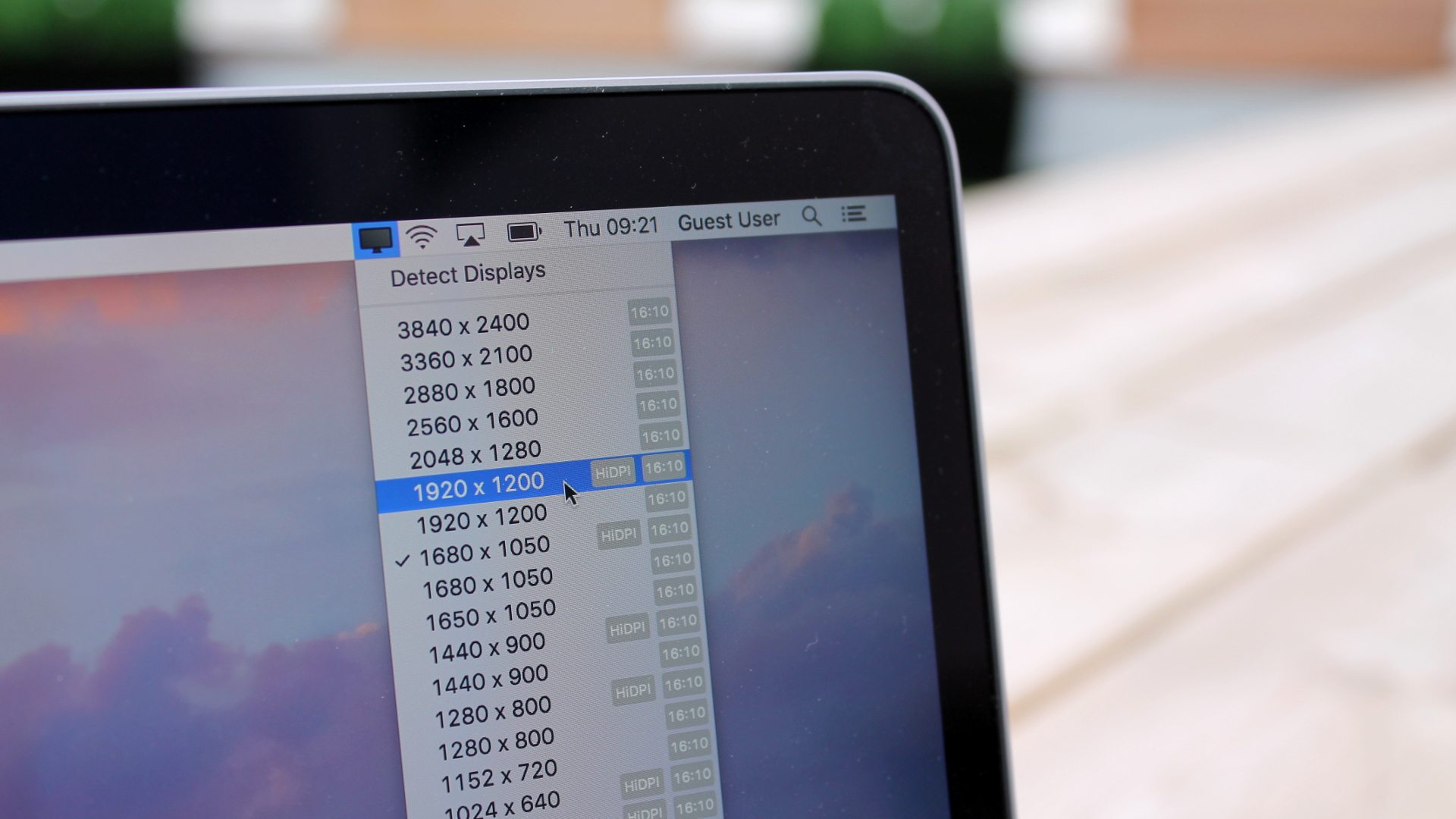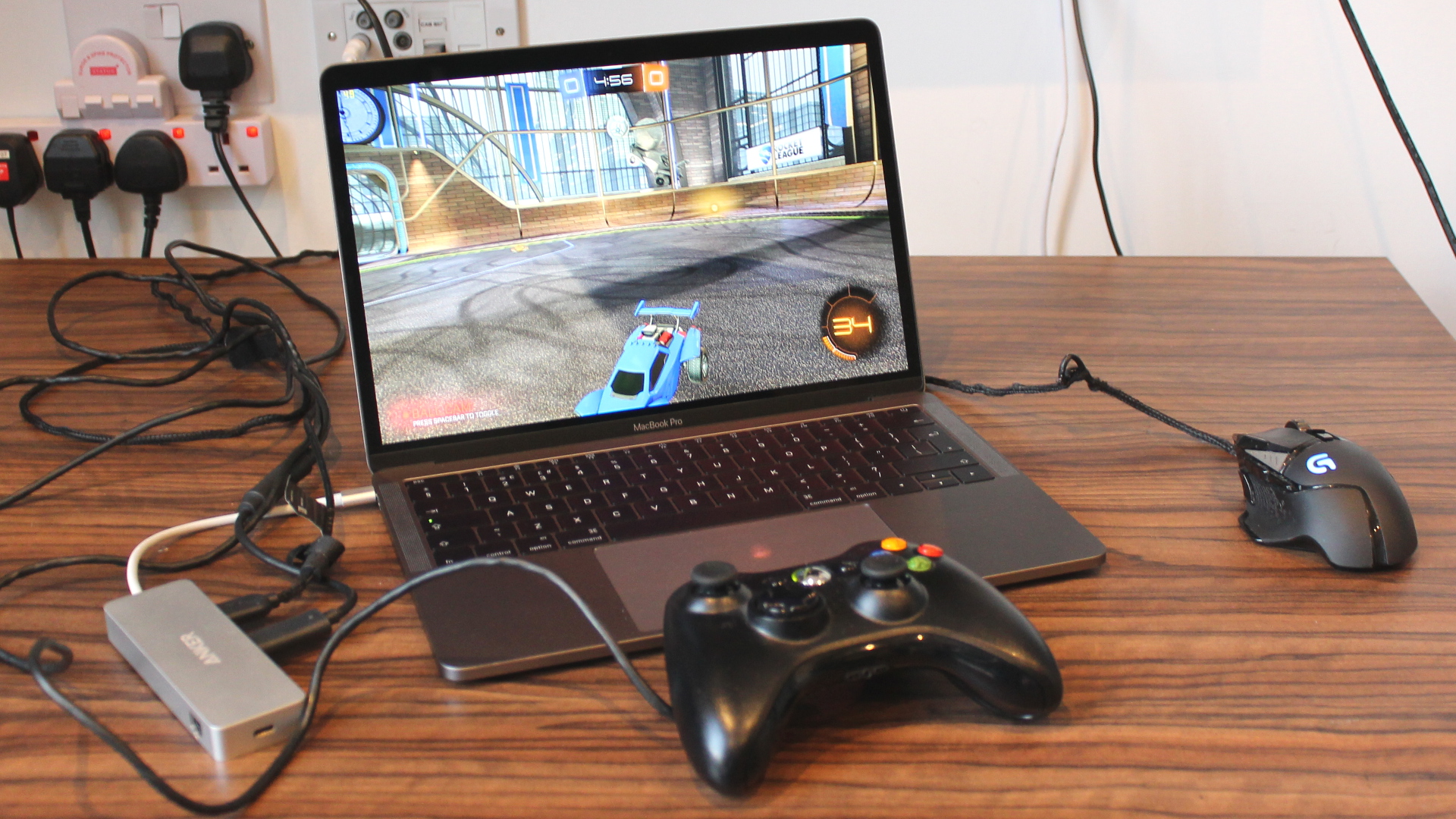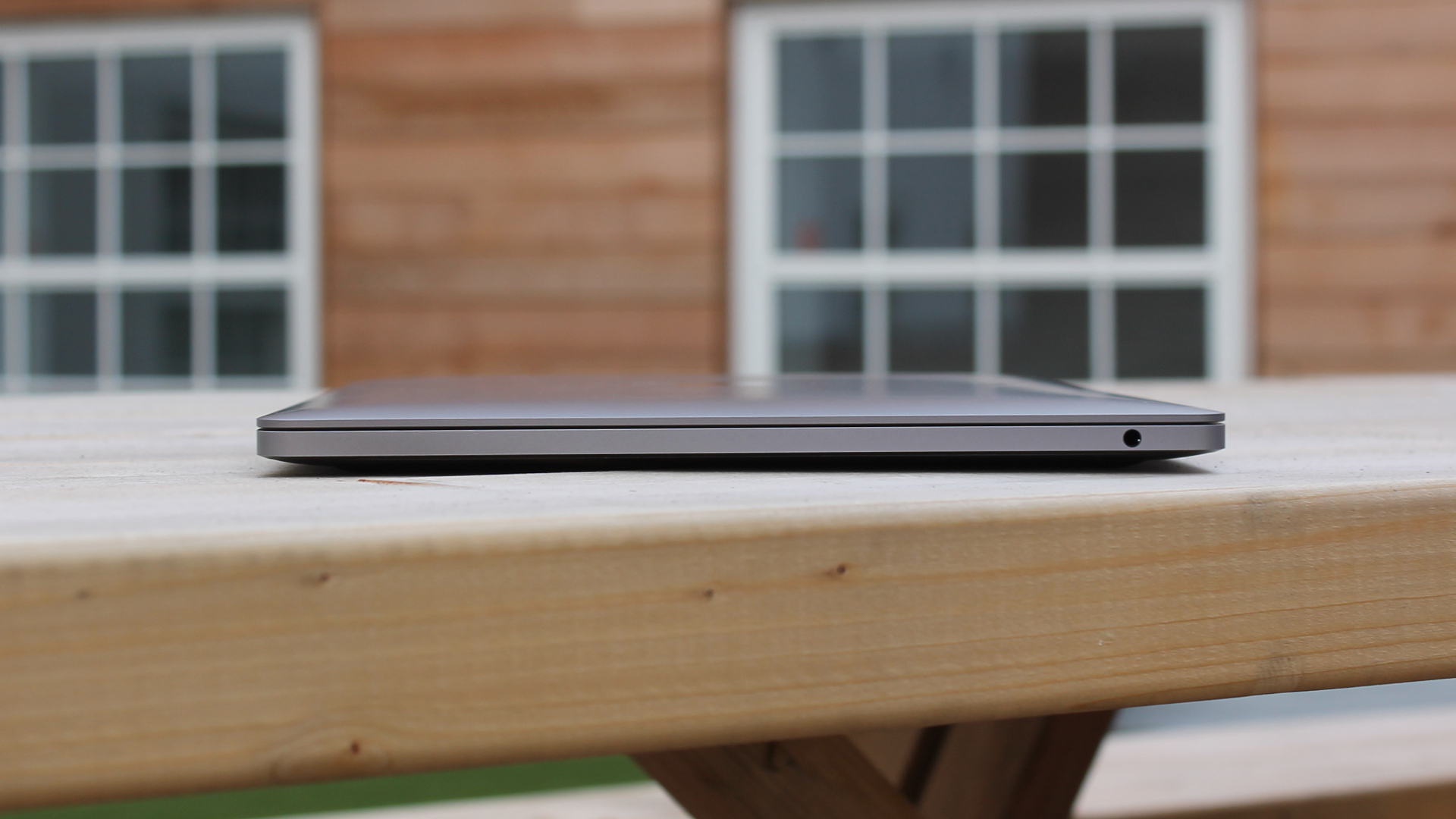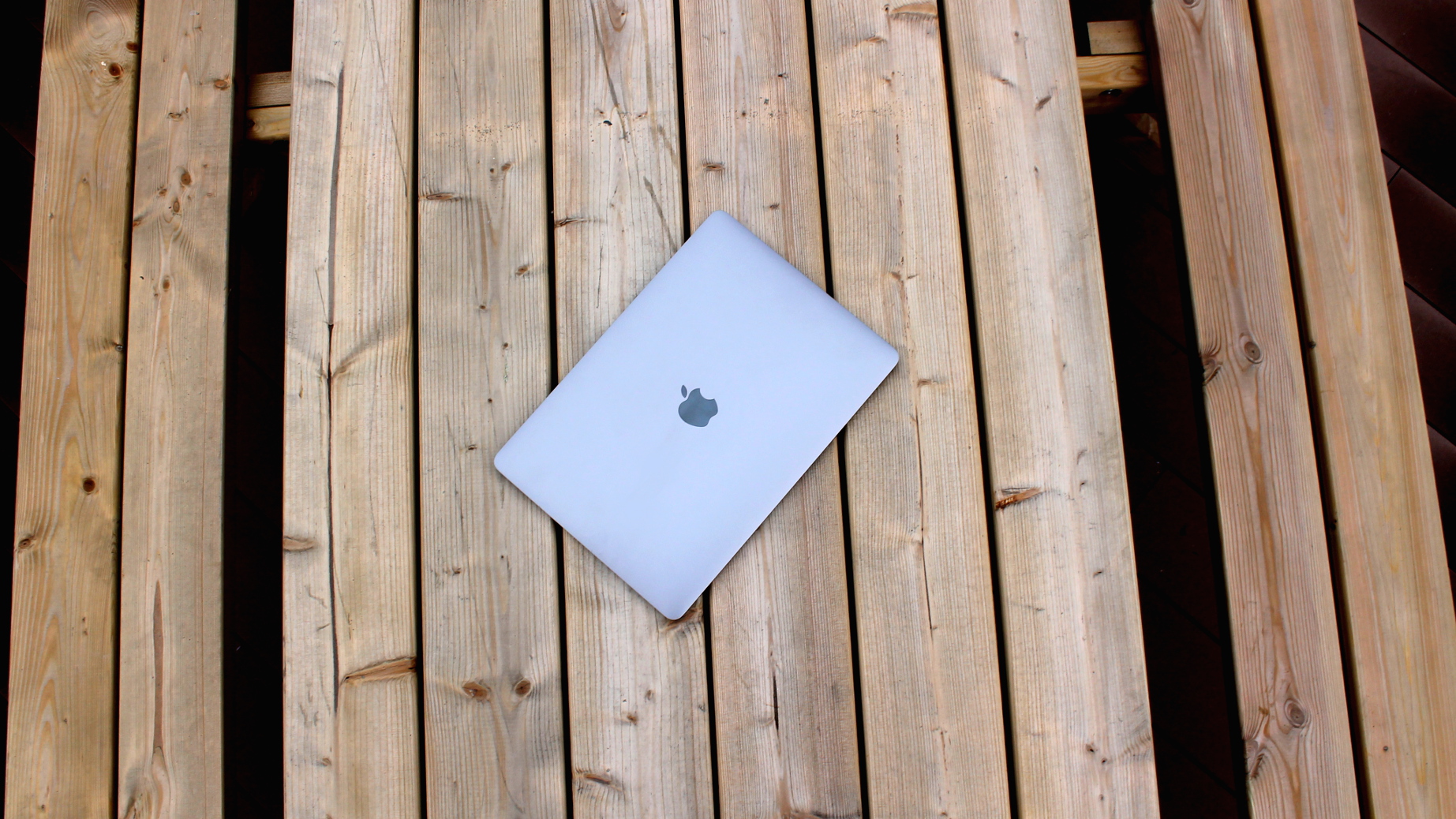Why you can trust TechRadar
The entry-level MacBook Pro starts at £1,499 ($1,499 or AUS$2,199) for the base model, which comes with a 6th-generation Skylake processor, 256GB of storage and 8GB of DDR3 memory.
That’s £300/$350/AUS$420 less than the Touch Bar model.
The cost seems high for a MacBook Air replacement, but Apple never said which Air it was referring to. It was, in fact, pointing to the 13-inch version with a 2.2GHz Dual-Core Intel Core i7 processor, which starts at £1,299 ($1,299/AUS$1,700).
The two machines have pretty much the same specs – so you’re paying the extra £200/$250/AUS$320 for all of the MacBook Pro’s new design elements and other niceties.
CPU: 2GHz Intel Core i5-6360U (dual-core, up to 3.1GHz using Turbo Boost)
Graphics: Intel Iris Graphics 540
RAM: 8GB (1866MHz LPDDR3)
Screen: 13.3-inch, 2,560 x 1,600 Retina LED-backlit IPS
Storage: 256GB PCIe SSD
Connectivity: 802.11ac Wi-Fi; IEEE 802.11 a/b/g/n
Camera: 720p FaceTime HD webcam
Weight: 3.02 pounds (1.37kg)
Size: 11.97 x 8.36 x 0.59 inches (30.4 x 21.24 x 1.49cm; W x D x H)
The 13-inch MacBook Pro can be upgraded to a 2.4GHz dual-core Intel Core i7 processor (with Turbo Boost up to 3.4GHz) for an extra £270/$270/AUS$430.
RAM can be doubled to 16GB for an extra £180/$180/AUS$290), and storage goes all the way up to a 1TB for another £540/$540/AUS£870.
How does that compare against the competition? You can pick up a similarly-outfitted HP Spectre x360, which features a rotating hinge and a touchscreen display, for a more palatable £999 ($999 or AUS$1,600), and Dell’s popular XPS 13 will set you back in the region of £1,100 ($1,399 or AUS$1,700).
Microsoft’s newest Surface Book, which also features a 256GB SSD, Intel Core i5 processor and 8GB of RAM, is on a pricing par with the new MacBook Pro, costing £1,439 ($1,599, AU$2,949) with a Surface Pen included.

Screen and speakers
Apple stuck with the same 2,560 x 1,600 pixel-resolution for the display that you’ll find on the previous generation MacBook Pro. It’s a sensible move considering the toll that upgrading it to 4K or even QHD+ would have on battery life.
The display is 67% brighter with 67% higher contrast ratio and 25% more colors than previous Pro models, and it’s noticeable from the moment you flip open the lid. Images appear incredibly vibrant, with deep blacks and colors that “pop”.

The display now supports the P3 color space, which is also supported by the 5K iMac and displays a wider range of reds and greens than before when viewed in a camera's RAW format.
Movies are great to watch on it, and both videos and music benefit from Apple’s redesigned speaker system which delivers twice the dynamic range compared to older models.

Performance
When it comes to getting stuff done, the MacBook Pro is more than up to the task. The Skylake processor and 8GB of memory combine to great effect, allowing a double digit number of applications to be open at once with several tab-filled browsers in the background. Even Parallels Desktop 12, which runs choppy on the 1.2GHz version of the Broadwell-based 13-inch MacBook Air from 2015, handles Office 2016 like a champ.
Our benchmark figures reflect the MacBook Pro’s superiority, scoring higher on Geekbench 3’s multi-core CPU test (6,646 versus the Air’s 5,768) and NovaBench’s full-system benchmark test (730 versus 634).
The MacBook Pro smashed BlackMagic’s Disk Speed test out of the park, exceeding the app’s maximum write speed of 2,000MB/s, whereas the Air peaked at 1,302MB/s. Apple says that the MacBook can reach sequential write speeds of up to 3.1GBps.
The Pro’s read speed of 1,048MB/s is similarly impressive, beating the Air’s 612MB/s. Apple’s new MacBook feels like snappy whatever you’re running on it, and that’s largely down to its blazing fast storage.
The MacBook’s impressive battery life is capable of reaching into the double figures if you keep the display’s brightness turned down to halfway while monitoring any apps that may be sapping battery life. The unit lasted 7 hours and 24 minutes through our anecdotal battery test, which is looping a locally stored 1080p film at 75% screen brightness.
Here's how the MacBook Pro performed in our suite of benchmark tests:
Benchmarks
- Xbench Overall: 233; CPU: 131
- Cinebench R15: Will not run
- Unigine Heaven 4.0 Medium Quality (1,680 x 1,050): 582; FPS: 23.1
- Unigine Heaven 4.0 Ultra Quality (1,680 x 1,050): 435; FPS: 17.3
- NovaBench: 730; Graphics: 74
- Geekbench 3 Single Core: 3,029; Multi Core: 6,646
- BlackMagic Disk Speed Read: 1,048 MB/s; Write: 2,000 MB/s
- Batman: Arkham City (1,440 x 900, Medium): 54 fps
- Tomb Raider (1,400 x 900 , Medium): 42 fps
- Anecdotal battery test: 7 hours and 24 minutes

Gaming
MacBooks like the entry-level MacBook Pro have never made great gaming machines in the absence of dedicated graphics. That's mostly the case with this new machine, although the addition of 64MB of embedded eDRAM graphics memory means that lesser demanding 3D games are now playable with decent frame rates. There’s a noticeable difference compared to the last generation of MacBooks, which are 80% slower, according to Apple.
The two games we tested, Batman and Tomb Raider, both served up respectable average frame rates. If you're more concerned with hitting that golden 60 frames per second (fps), you're looking at lowering the resolution to 1,200 x 800 and dropping the quality.
Lesser demanding games, like Rocket League, manage to hit 60fps with only occasional dips to 45fps set to 800p with the graphics quality settings maxed out, resulting in an enjoyable experience. The Elder Scrolls V: Skyrim too is capable of a rock-solid 60fps set to medium quality and the draw distance settings lowered.
Overwatch, on the other hand, is a frustrating experience. While it's possible to hit 60fps on the lowest resolutions, factors such as the map and number of characters on-screen at any one time can cause the frame rate to tank at any given moment. We found ourselves having to lower the resolution scale to 75% to achieve maximum fluidity. Sure, it's playable, but if you aren't prepared to compromise on frame rate then be prepared to pull your hair out.

Final verdict
It’s been a long wait for a new MacBook Pro, and in many ways it feels like this new 13-inch model has been worth it. There are just so many positives about the machine that make it a joy to use – from its svelte dimensions to its eye-popping display, great battery life, huge trackpad, snappy storage, improved low-end gaming capabilities and full-bodied speakers.
Despite practically sharing specs with the more powerful configure-to-order MacBook Air, it feels like the more responsive and capable machine – although the benchmarks suggest that you’re going to need one of the more powerful quad-core 15-inch MacBook Pros to run more demanding applications. The new 13-inch Pro may edge out the Air, but not by much.
On the flip side, the MacBook Pro is a compromised experience – and its downsides are likely to be deal breakers for many. Having just two (poorly positioned) USB-C ports rules out the use of multiple monitors and charging at the same time, and you’ll need to pick up at least a dongle or two if you want to use those wired USB-A peripherals that you’ve been accustomed to. And, then there’s that keyboard, which is such an integral part to the computing experience that its lack of tactility may make it unsuitable for people who type thousands of words daily for a living.
For many others, however, the MacBook Pro will prove a worthy upgrade. If Apple tweaks its flaws for the next version while inevitably shaving yet more thickness from its base, then we could be in for a more unanimously exciting upgrade.

